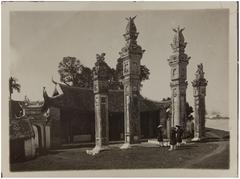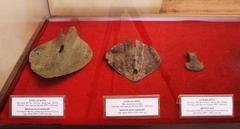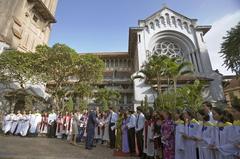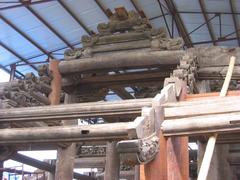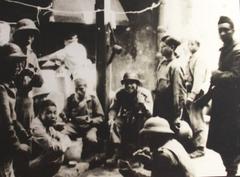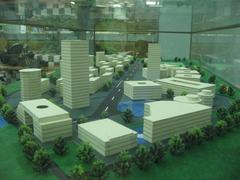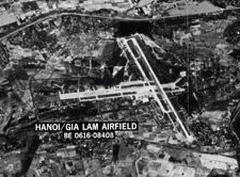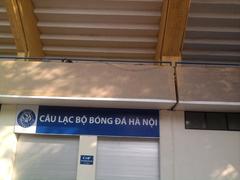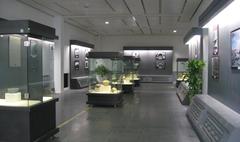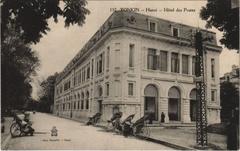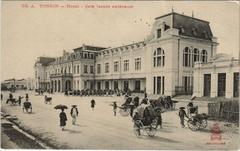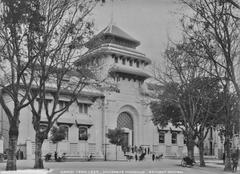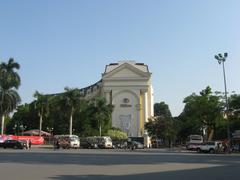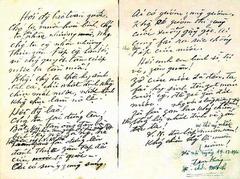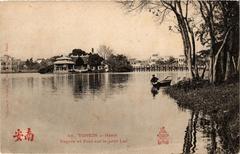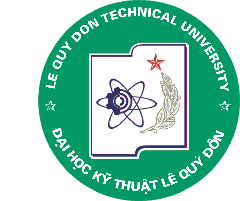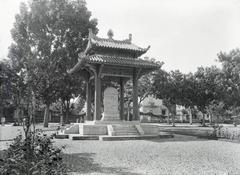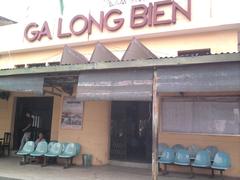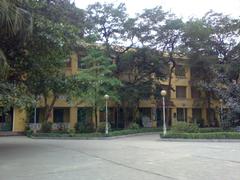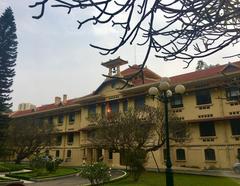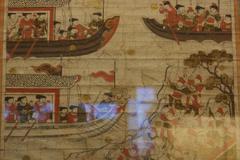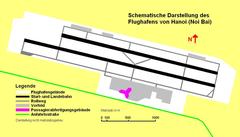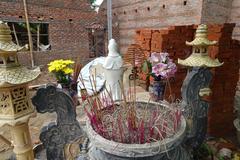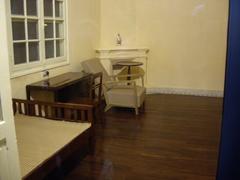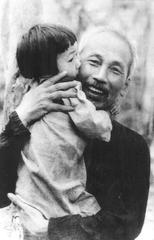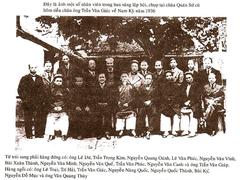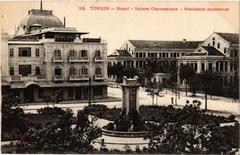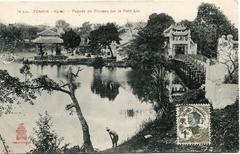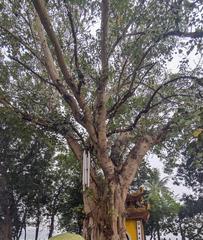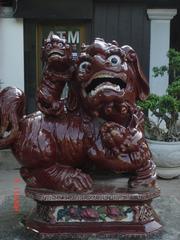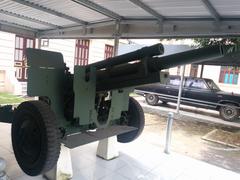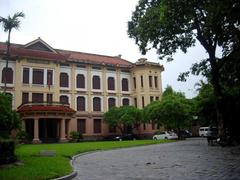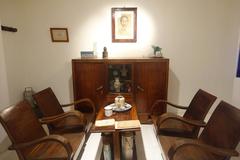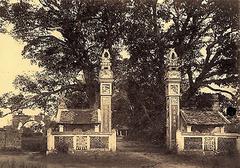Visiting Vietnam Military History Museum: Hours, Tickets, and Tips
Date: 16/08/2024
Introduction
The Vietnam Military History Museum in Hanoi offers a profound glimpse into the nation’s rich military heritage. Established on July 17, 1956, and opened to the public on December 22, 1959, the museum was created to commemorate the 15th anniversary of the Vietnam People’s Army foundation (Vietnam Discovery). Centrally located at 28A Dien Bien Phu Street, Ba Dinh District, the museum is surrounded by significant landmarks such as Lenin Park and the Ho Chi Minh Mausoleum (Wikipedia). Covering an area of 12,800 square meters, the museum features both indoor and outdoor exhibition spaces, including the iconic Flag Tower of Hanoi, which stands as a national historic cultural monument (Vietnam Discovery). Visitors to the museum can explore over 150,000 artifacts that narrate the story of Vietnam’s military history from ancient times to the present day (Uncover Vietnam).
Table of Contents
- [History and Significance of the Vietnam Military History Museum](#history-and-significance-of-the-vietnam-military-history-museumhistory-and-significance-of-the-vietnam-military-history-museum)
- [Establishment and Evolution](#establishment-and-evolutionestablishment-and-evolution)
- [Location and Layout](#location-and-layoutlocation-and-layout)
- [Architectural Highlights](#architectural-highlightsarchitectural-highlights)
- [Exhibits and Collections](#exhibits-and-collectionsexhibits-and-collections)
- [Outdoor Exhibits](#outdoor-exhibitsoutdoor-exhibits)
- [Indoor Exhibits](#indoor-exhibitsindoor-exhibits)
- [Historical Context](#historical-contexthistorical-context)
- [Cultural and Educational Significance](#cultural-and-educational-significancecultural-and-educational-significance)
- [Visitor Experience](#visitor-experiencevisitor-experience)
- [Notable Artifacts](#notable-artifactsnotable-artifacts)
- [Accessibility and Visitor Tips](#accessibility-and-visitor-tipsaccessibility-and-visitor-tips)
- [Ultimate Guide to the Vietnam Military History Museum](#ultimate-guide-to-the-vietnam-military-history-museumultimate-guide-to-the-vietnam-military-history-museum)
- [Location and Accessibility](#location-and-accessibilitylocation-and-accessibility)
- [Entrance Fees and Operating Hours](#entrance-fees-and-operating-hoursentrance-fees-and-operating-hours)
- [Exhibits and Highlights](#exhibits-and-highlightsexhibits-and-highlights)
- [Guided Tours and Audio Guides](#guided-tours-and-audio-guidesguided-tours-and-audio-guides)
- [Visitor Etiquette](#visitor-etiquettevisitor-etiquette)
- [Nearby Attractions](#nearby-attractionsnearby-attractions)
- [Dining and Refreshments](#dining-and-refreshmentsdining-and-refreshments)
- [Accessibility for Disabled Visitors](#accessibility-for-disabled-visitorsaccessibility-for-disabled-visitors)
- [Souvenirs and Memorabilia](#souvenirs-and-memorabiliasouvenirs-and-memorabilia)
- [Safety and Security](#safety-and-securitysafety-and-security)
- [Best Time to Visit](#best-time-to-visitbest-time-to-visit)
- [Frequently Asked Questions](#frequently-asked-questionsfrequently-asked-questions)
- [Conclusion](#conclusionconclusion)
- [References](#referencesreferences)
History and Significance of the Vietnam Military History Museum
Establishment and Evolution
The Vietnam Military History Museum, also known as the Army Museum, was established on July 17, 1956, and officially opened to the public on December 22, 1959. This date was chosen to coincide with the 15th anniversary of the Vietnam People’s Army foundation. The museum was constructed under the directive of the Ministry of Defence, following the Vietnam Communist Party’s policy to preserve and showcase the nation’s military history (Vietnam Discovery).
Location and Layout
Situated at 28A Dien Bien Phu Street, Ba Dinh District, Hanoi, the museum is centrally located near significant landmarks such as Lenin Park, the Presidential Palace, and the Ho Chi Minh Mausoleum. The museum covers an area of 12,800 square meters and includes both indoor and outdoor exhibition spaces (Wikipedia).
Architectural Highlights
One of the most notable architectural features within the museum grounds is the Flag Tower of Hanoi. Constructed between 1805 and 1812 during the reign of King Gia Long, the tower stands nearly 31 meters tall and has a circumference of 180 meters. It has been classified as a national historic cultural monument and serves as a symbol of Hanoi (Vietnam Discovery).
Exhibits and Collections
The museum boasts an extensive collection of over 150,000 historical artifacts and documents. These include large military hardware such as decommissioned fighter jets, tanks, and the remnants of an American B-52 bomber. The exhibits are divided into various sections that cover different periods of Vietnamese military history, from ancient times to the modern era (Uncover Vietnam).
Outdoor Exhibits
The outdoor section spans 5,000 square meters and showcases large artifacts linked to Vietnam’s defense efforts. Notable exhibits include captured SAM-2 and SAM-3 missiles, a victory monument made from a downed B-52 aircraft, and various historical guns and cannons. The area also features four national treasures: two MiG-21 aircraft (numbers 5121 and 4324) and two T-54B tanks (number 843) (Vietnam Tour).
Indoor Exhibits
The indoor exhibits are housed in several buildings, each dedicated to different eras of Vietnamese military history. The first floor is divided into three rooms:
- Room 1: Covers the military history from the Hung Kings period until Ngo Quyen defeated the Han army at the Bach Dang River in 938.
- Room 2: Features a statue of President Ho Chi Minh and images from the first Indochina War (1858-1945).
- Room 3: Focuses on the military history from the Ly to Nguyen dynasties (Vietnam Travel).
Historical Context
The museum provides a comprehensive overview of Vietnam’s military history, highlighting the nation’s struggles against foreign invaders. It covers six main periods:
- The Birth of the Vietnamese Nation and the Vietnam People’s Army: This section includes artifacts from the early stages of Vietnam’s history, showcasing the formation and development of the Vietnamese military.
- Struggle Against French Colonialism: This period covers the resistance against French colonial forces, culminating in the decisive Battle of Dien Bien Phu.
- Struggle Against American Imperialism: This section focuses on the Vietnam War, featuring personal accounts, photographs, and military equipment used during the conflict.
- Post-War Reconstruction and Defense: Highlights the efforts to rebuild the nation and maintain its sovereignty after the war.
- Modern Military Developments: Showcases the advancements in Vietnam’s military capabilities in recent years.
- International Relations and Peacekeeping: This section emphasizes Vietnam’s role in international peacekeeping efforts and its diplomatic relations with other countries (Vietnam Discovery).
Cultural and Educational Significance
The Vietnam Military History Museum serves as a cultural and educational hub, hosting a wide range of activities, including lectures, seminars, and cultural events. It offers valuable insights into Vietnam’s military heritage and its influence on the nation’s identity. The museum’s exhibitions are designed to be more than mere displays of artifacts; they weave compelling narratives that immerse visitors in the stories of courageous soldiers and the struggles of the Vietnamese people (North Vietnam).
Visitor Experience
The museum has welcomed over 17 million visitors, including more than 2.1 million foreigners from 150 countries. It has become a center of culture and history, attracting travelers who wish to understand more about Vietnam’s proud military history (Tour in Hanoi).
Notable Artifacts
Among the museum’s extensive collection, several artifacts stand out for their historical significance:
- MiG-21 Fighter Jets: These Soviet-built aircraft played a crucial role in Vietnam’s air defense during the Vietnam War.
- T-54B Tanks: These tanks were instrumental in the final assault on Saigon, leading to the unification of Vietnam in 1975.
- Ho Chi Minh Campaign Determination Map: This map symbolizes the strategic planning and determination that led to the successful conclusion of the Vietnam War (Guide to Hanoi).
Accessibility and Visitor Tips
The museum is open every day except Monday and Friday, with visiting hours from 8:00 AM to 11:30 AM and 1:00 PM to 4:30 PM. The entrance fee is 40,000 VND per visitor, with an additional camera fee of 30,000 VND. The museum is accessible by public bus routes 9, 18, 41, and 45, and is also reachable by taxi or motorbike (Uncover Vietnam).
Ultimate Guide to the Vietnam Military History Museum
Location and Accessibility
The Vietnam Military History Museum is centrally located at 28A Dien Bien Phu Street, Ba Dinh District, Hanoi, near several notable landmarks. This prime location makes it easily accessible by various modes of transport, including public buses, taxis, and motorbikes. Nearby attractions include the Presidential Palace and Ho Chi Minh Mausoleum, allowing visitors to plan a comprehensive day of sightseeing.
Entrance Fees and Operating Hours
The entrance fee to the museum is 40,000 VND per visitor, with an additional camera fee of 30,000 VND. The museum operates from Tuesday to Sunday, 8:00 AM to 11:30 AM and 1:00 PM to 4:30 PM. It is closed on Mondays and significant national holidays. It is advisable to visit early in the morning to avoid crowds and the midday heat.
Exhibits and Highlights
The museum features an extensive collection of war relics and weaponry used throughout Vietnam’s history. Notable exhibits include the wreckage of an American B-52 bomber, a self-propelled gun of M107, and a military tank that famously plowed through the gates of the Independence Palace in Saigon on April 30, 1975, marking the end of the Vietnam War. Other significant exhibits include classic propaganda videos, improvised weapons, and a diorama of the Dien Bien Phu Campaign of 1954 (North Vietnam).
Guided Tours and Audio Guides
For a more in-depth understanding, visitors can opt for guided tours conducted by knowledgeable guides who provide detailed accounts of the exhibits and historical context. Audio guides are also available in multiple languages, including English, French, and Chinese, ensuring international visitors can fully appreciate the museum’s offerings.
Visitor Etiquette
Visitors are expected to maintain a respectful demeanor, especially in areas where detailed accounts by former Vietnamese soldiers are displayed. Touching exhibits is prohibited, and photography is allowed only in designated areas with the appropriate camera fee. Modest dress is encouraged due to the museum’s historical significance.
Nearby Attractions
The museum’s central location places it near several other attractions, including the Ho Chi Minh Mausoleum, Presidential Palace, and the botanical gardens. These sites offer additional historical insights and a serene escape from the bustling city.
Dining and Refreshments
There are numerous dining options near the museum, ranging from traditional Vietnamese cuisine to international fare. Visitors are advised to carry water, especially during summer, as the museum can get warm. Nearby cafes offer a place to relax and refresh after a visit.
Accessibility for Disabled Visitors
The museum is equipped with facilities for disabled visitors, including ramps and elevators. Wheelchairs can be rented at the entrance, and designated restrooms are available. It is recommended to inform the museum staff in advance if any special assistance is required.
Souvenirs and Memorabilia
The museum’s gift shop offers a variety of souvenirs, including books on Vietnam’s military history, replicas of war relics, and traditional crafts. These items make excellent keepsakes and gifts.
Safety and Security
The museum has strict security measures to ensure the safety of visitors and exhibits. Bags and personal belongings are subject to inspection at the entrance. Visitors are advised to keep valuables secure and be mindful of their surroundings. In case of emergencies, the museum staff are trained to provide assistance.
Best Time to Visit
The best time to visit is during the cooler months from November to March. The weather is pleasant, making it ideal for exploring the museum and surrounding attractions. Weekday visits are recommended to avoid weekend crowds.
Frequently Asked Questions
Q: How can I purchase tickets for the Vietnam Military History Museum? A: Tickets can be purchased at the museum entrance or online through the official website.
Q: Are there any special events or exhibitions at the museum? A: The museum occasionally hosts special exhibitions and events. Check the official website for the latest updates.
Q: Is the museum suitable for children? A: Yes, the museum is family-friendly and offers educational experiences for children interested in history.
Conclusion
The Vietnam Military History Museum stands as a testament to the indomitable spirit and unwavering determination of the Vietnamese people. It showcases the courage, sacrifice, and resilience that have defined the nation’s military history. Visitors leave with a profound appreciation for Vietnam’s journey to independence and its enduring commitment to peace and freedom (Trip.com).


